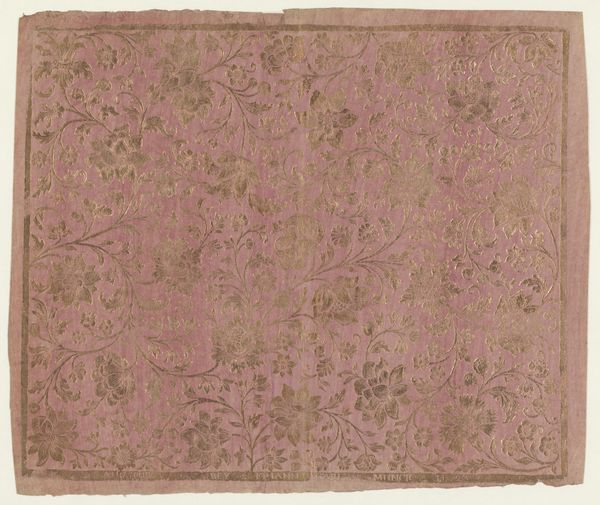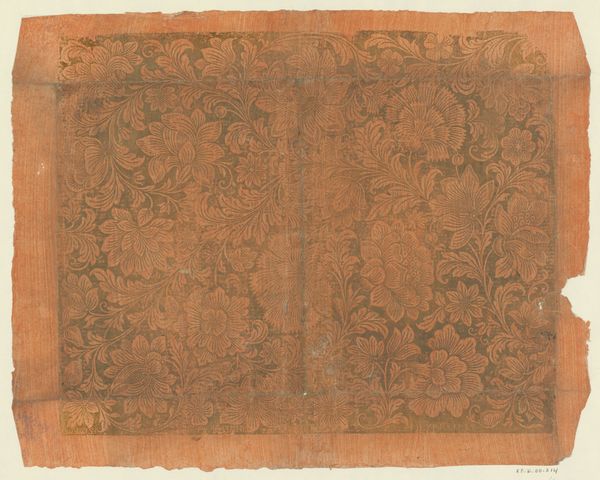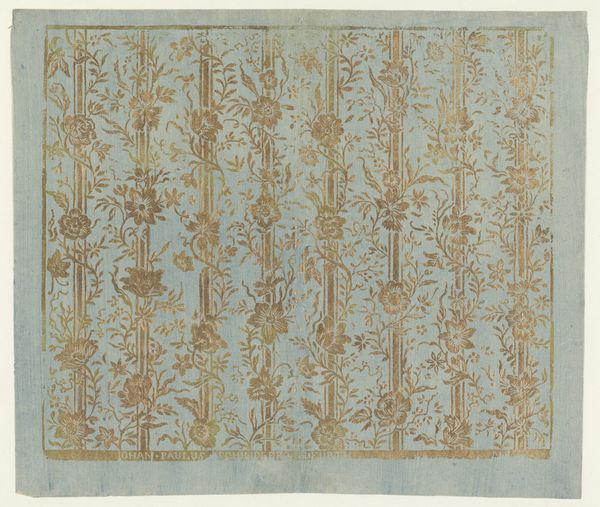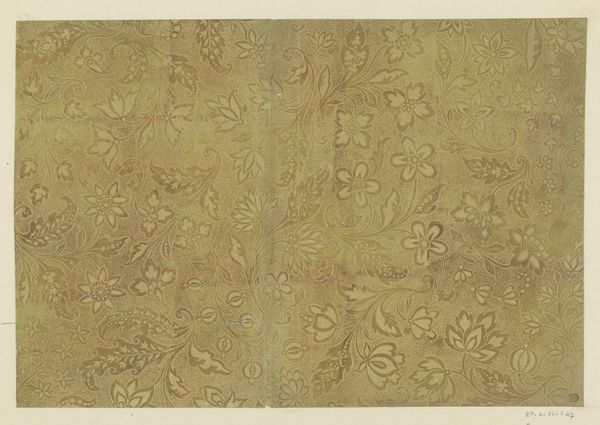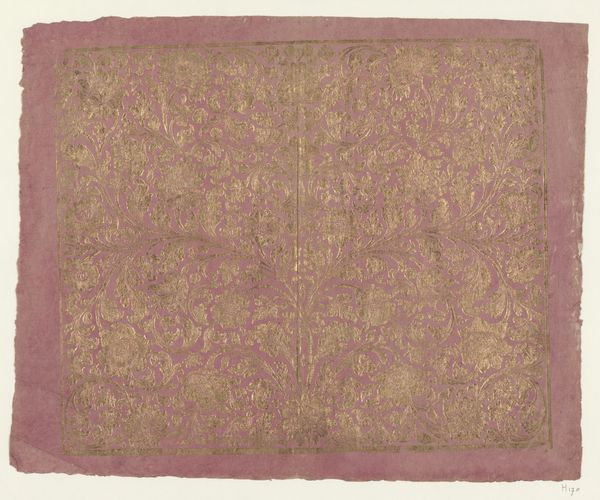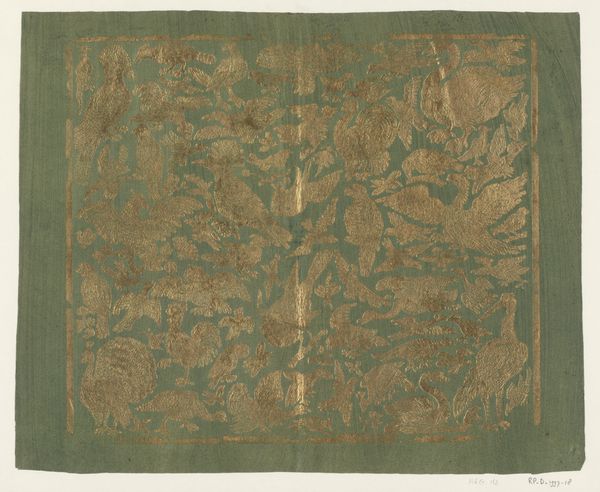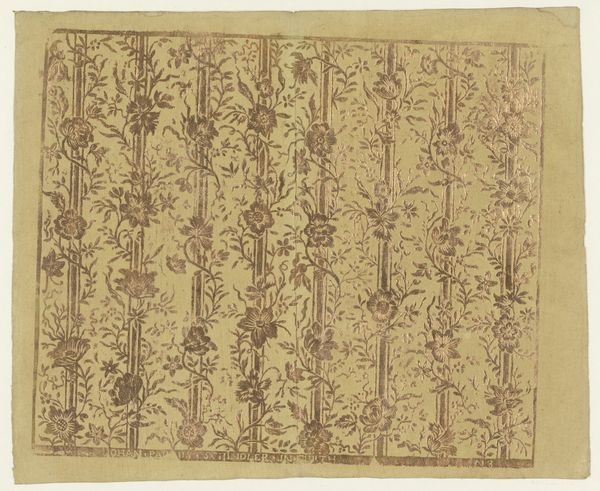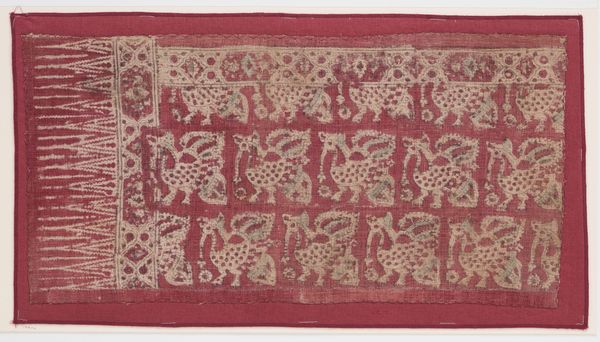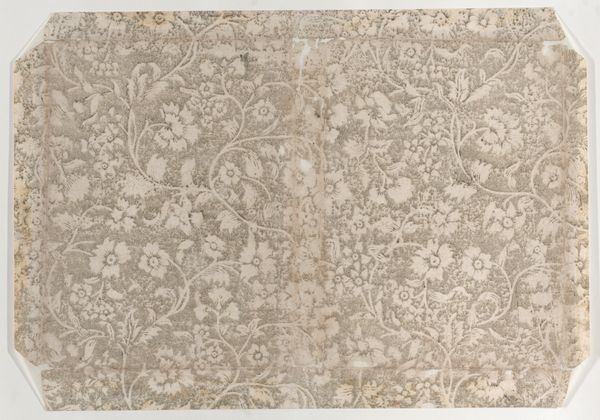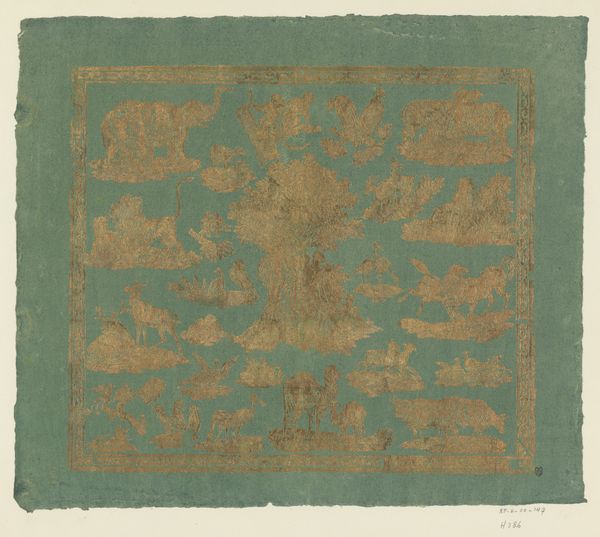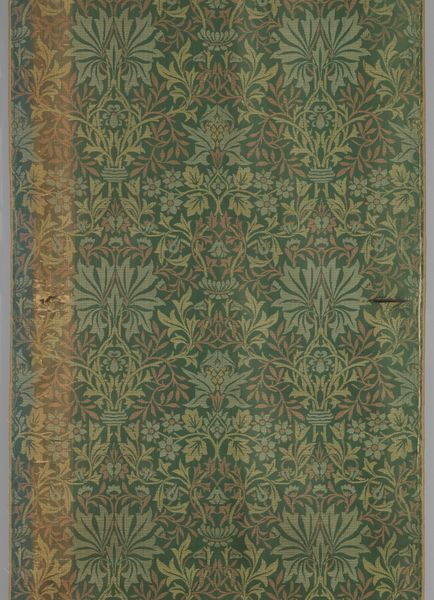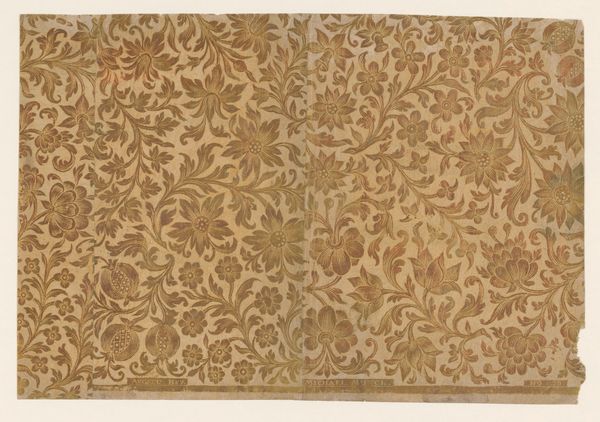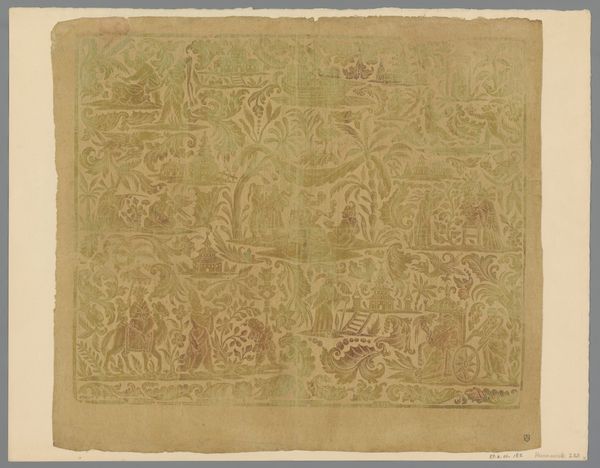
paper
#
paper
#
watercolor
Dimensions: height 318 mm, width 392 mm
Copyright: Rijks Museum: Open Domain
Paul Reimund created this design for textile production with pen and watercolour somewhere between 1764 and 1815. Its swirling floral patterns, framed by a strict border, suggest the luxury textile market for which it was intended. Reimund was working during a period of increasing industrialisation that greatly impacted textile production. Designs like this one were crucial for maintaining a sense of exclusivity amidst machine-made fabrics. The delicate, hand-rendered quality speaks to the continued desire for bespoke items among the wealthy. It also speaks to the changing role of the artist as designers who served the desires of commercial markets rather than wealthy patrons or the church. To truly understand Reimund's work, we can explore archives of textile production, fashion history, and economic data. These sources help us see art not just as aesthetic objects, but as products deeply embedded in social and institutional histories.
Comments
No comments
Be the first to comment and join the conversation on the ultimate creative platform.
